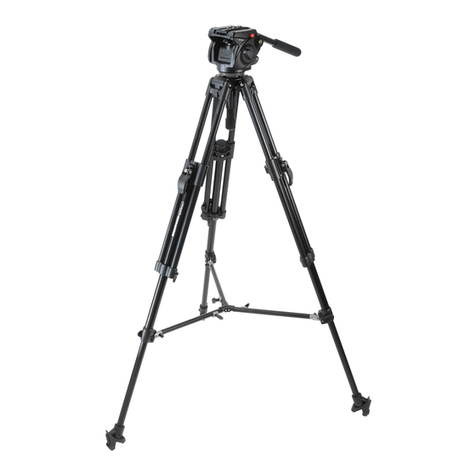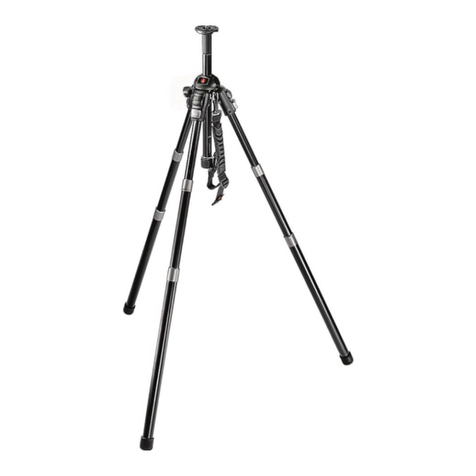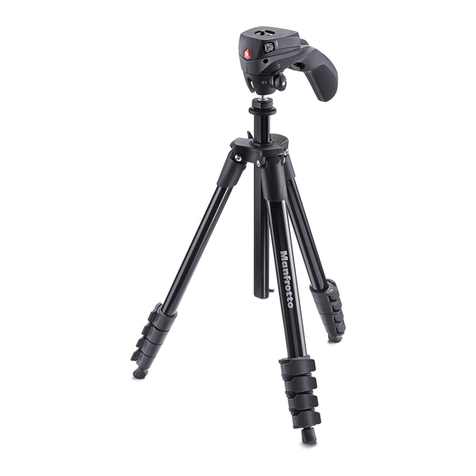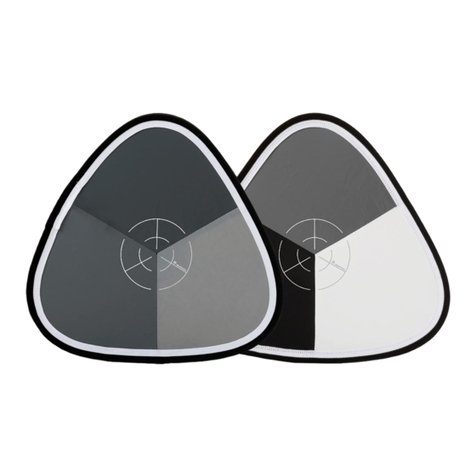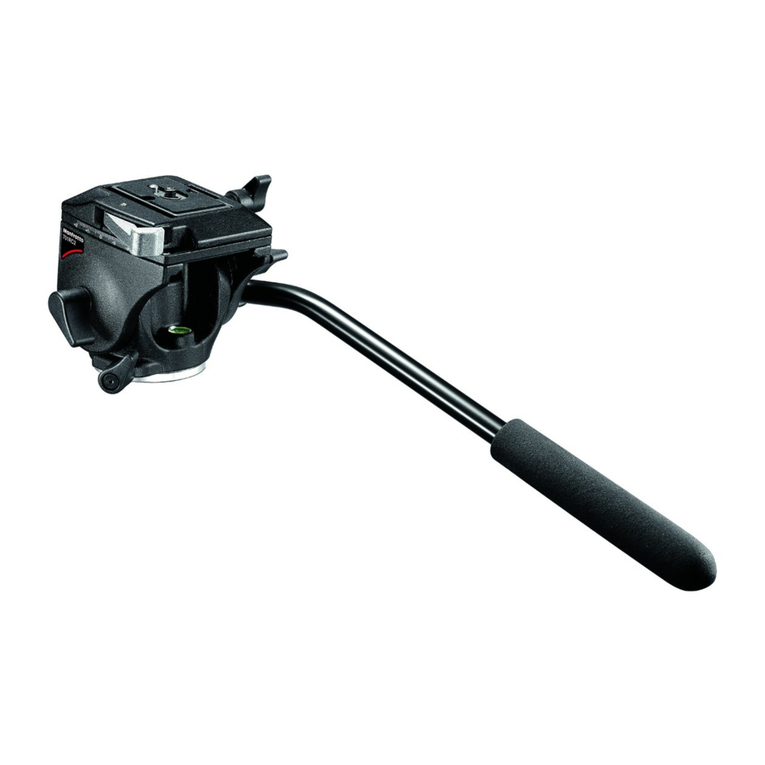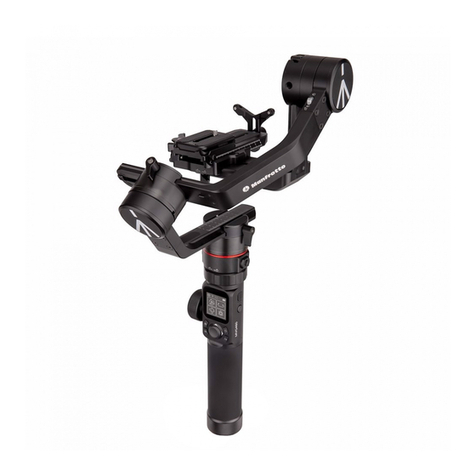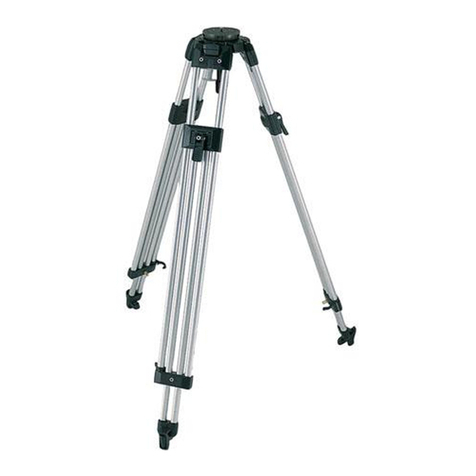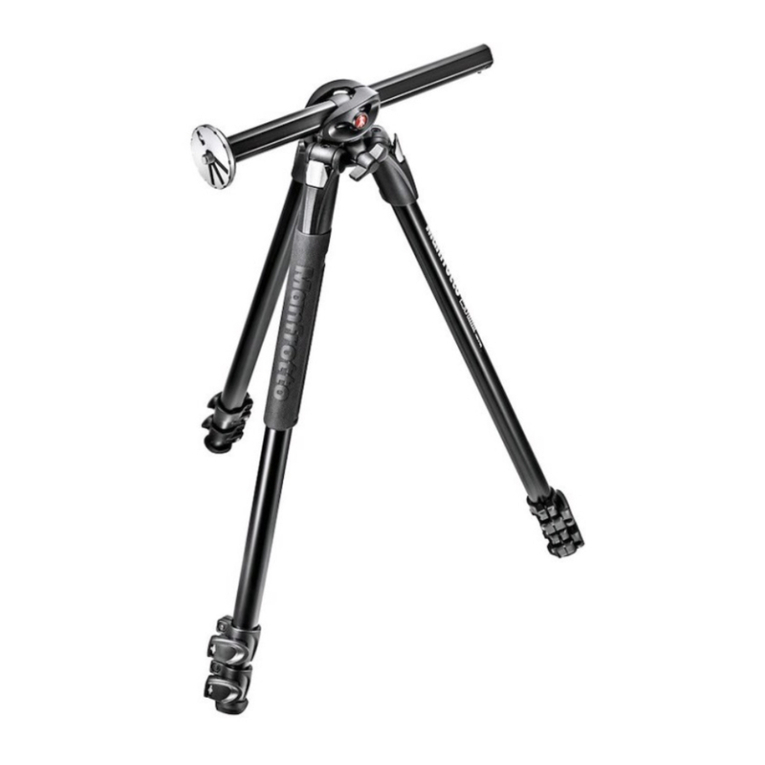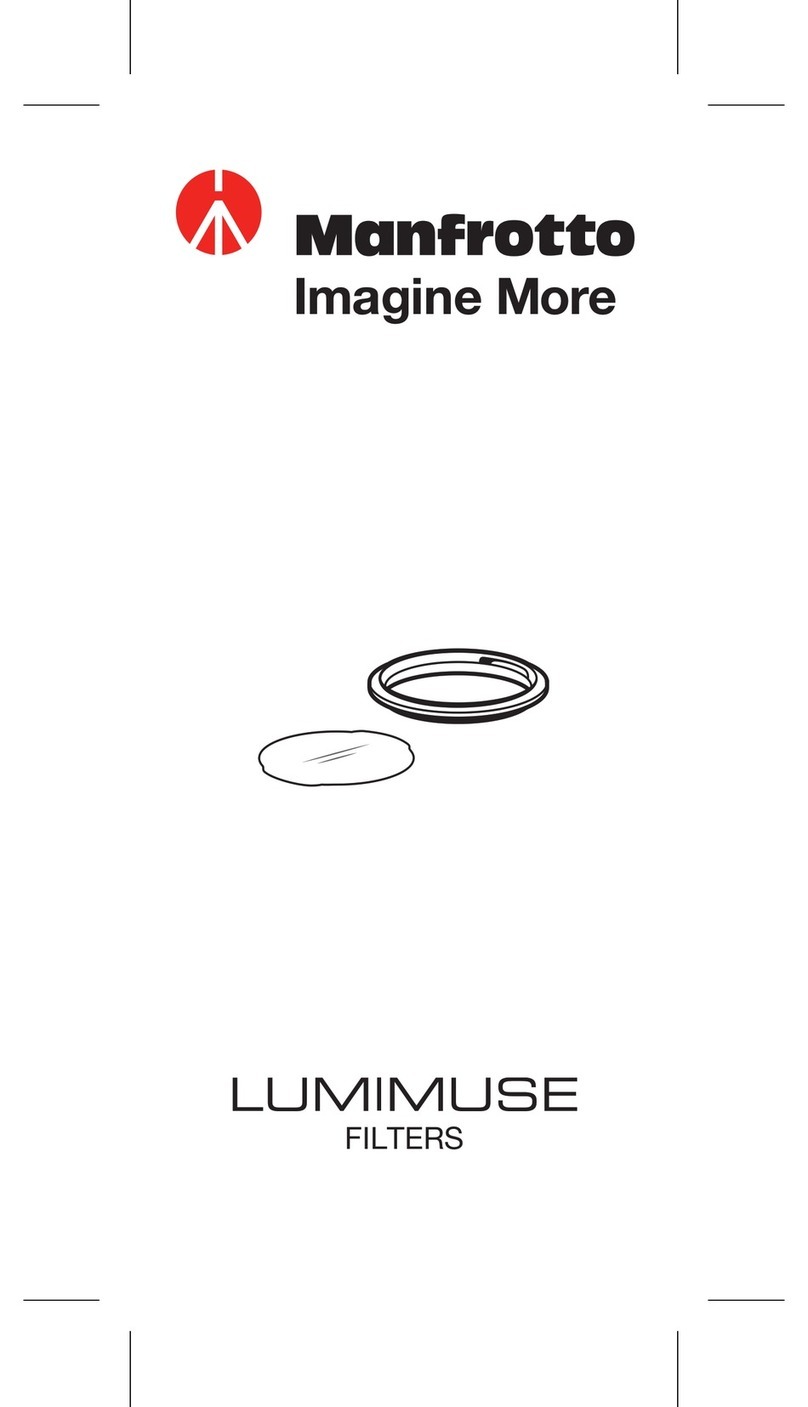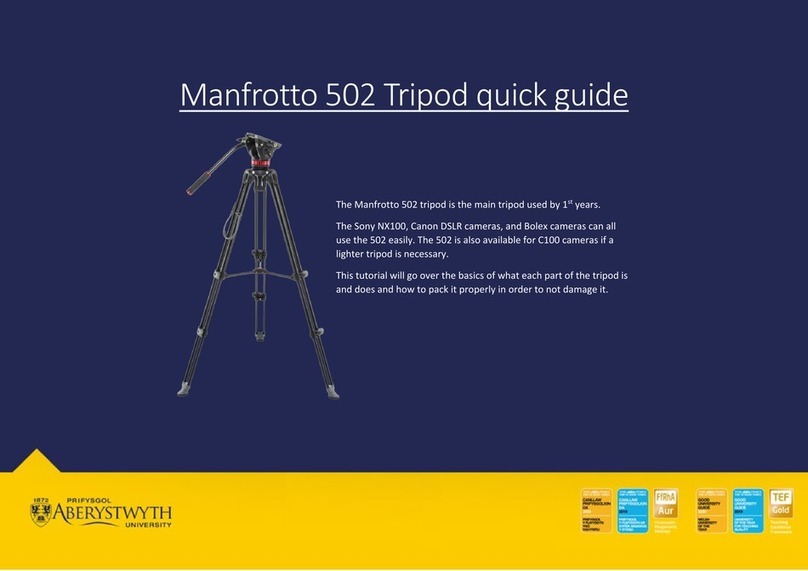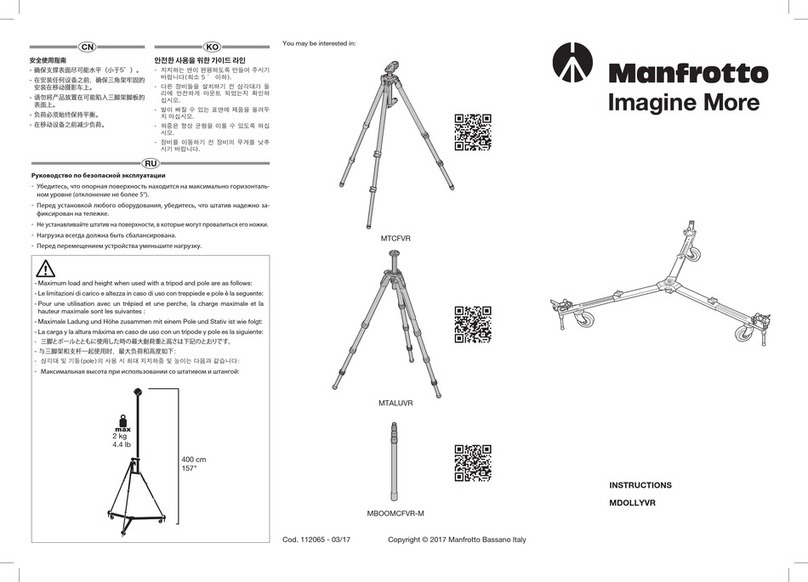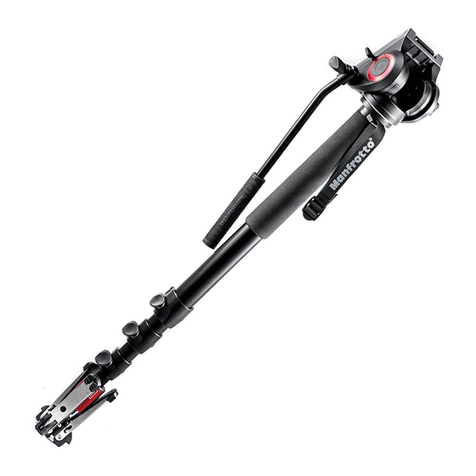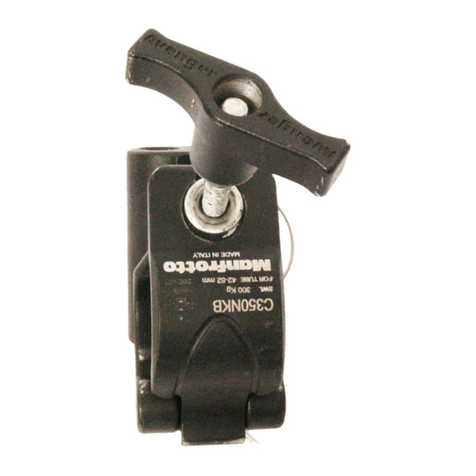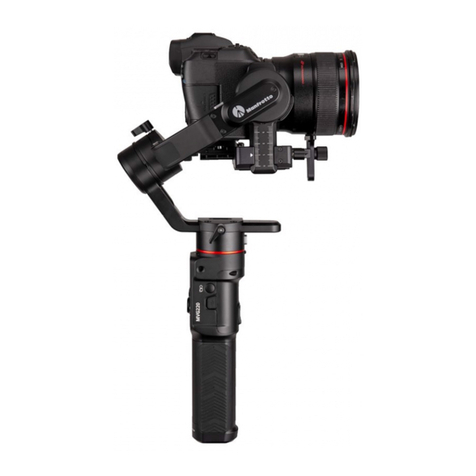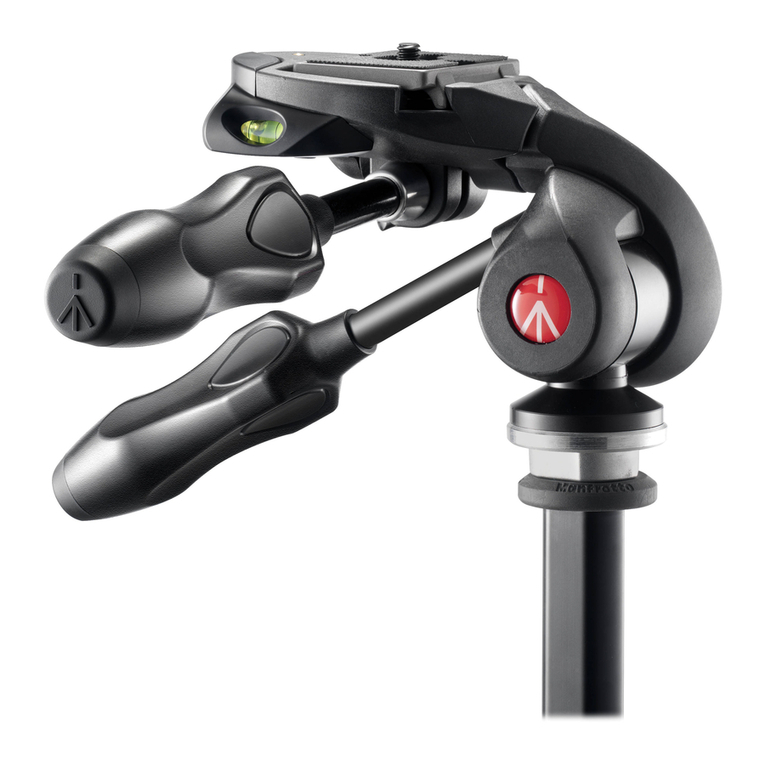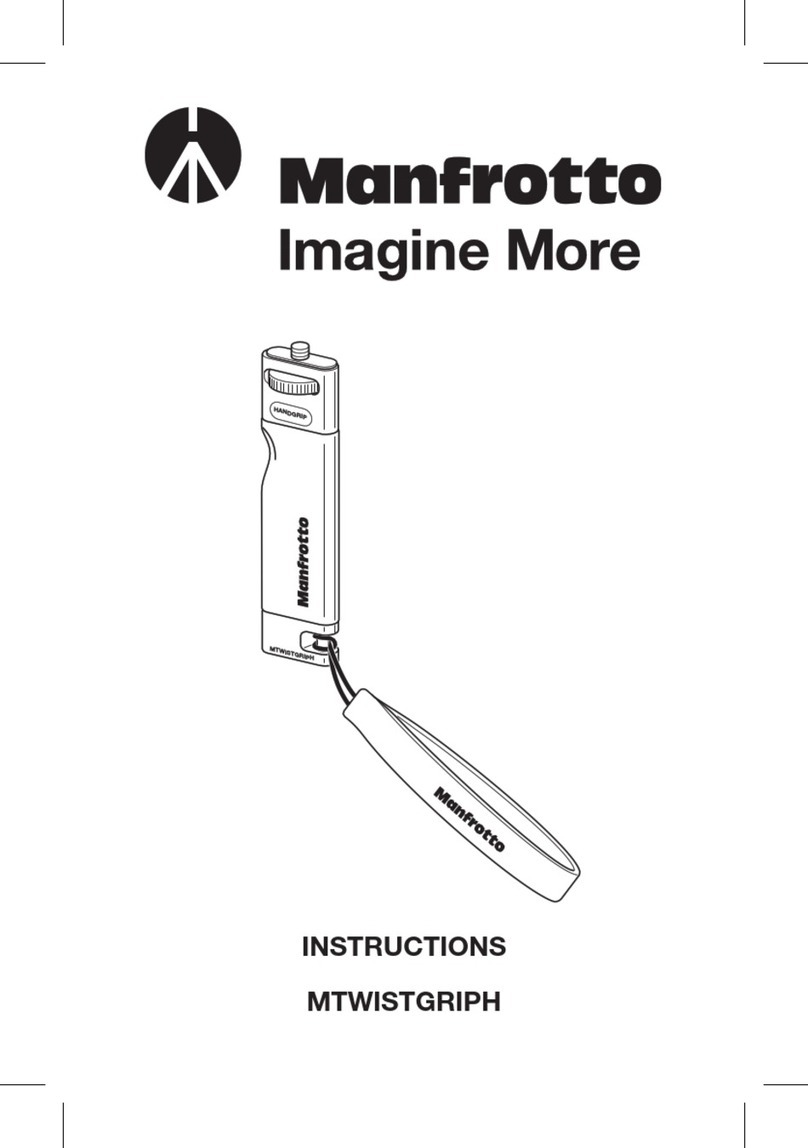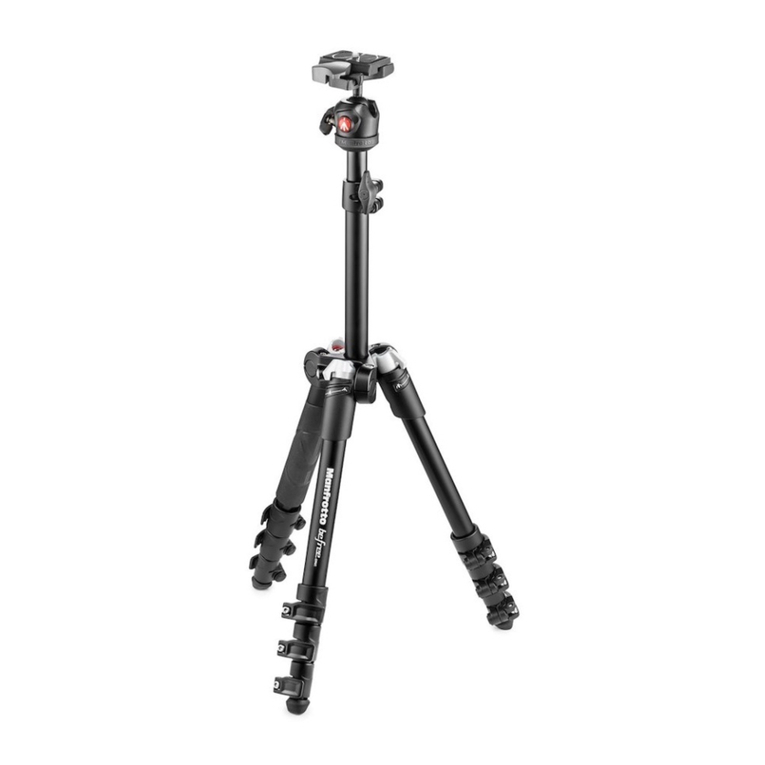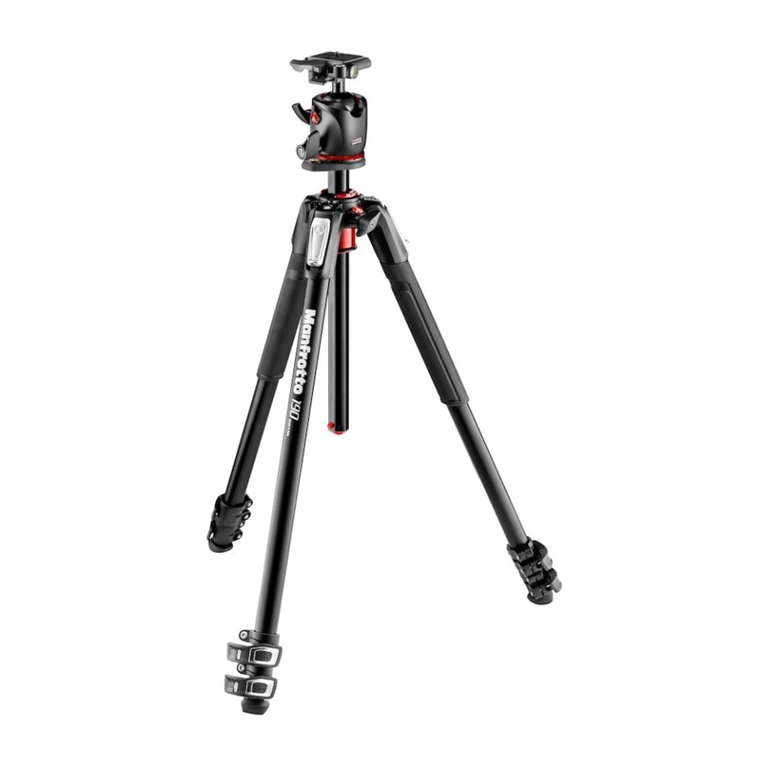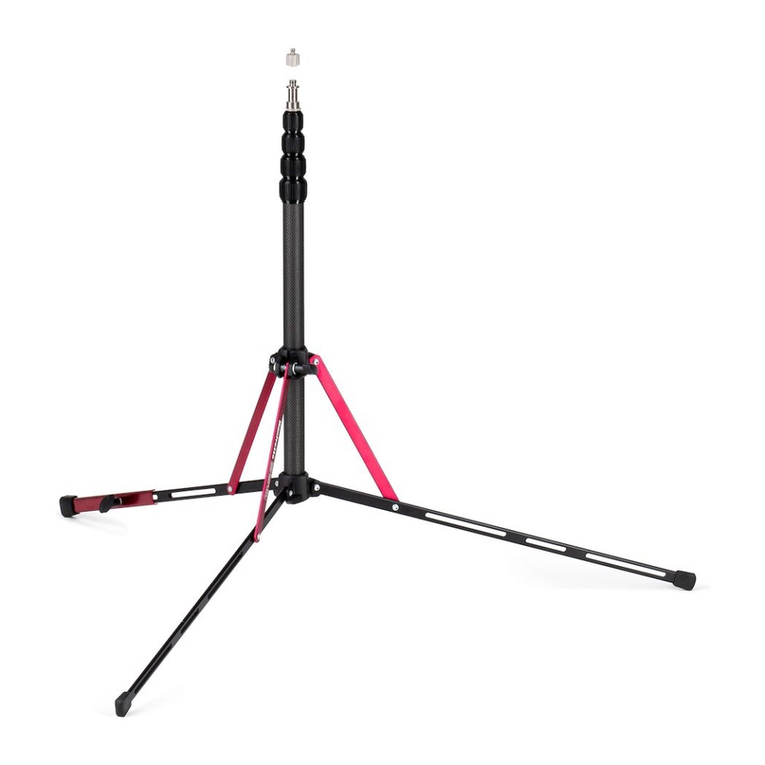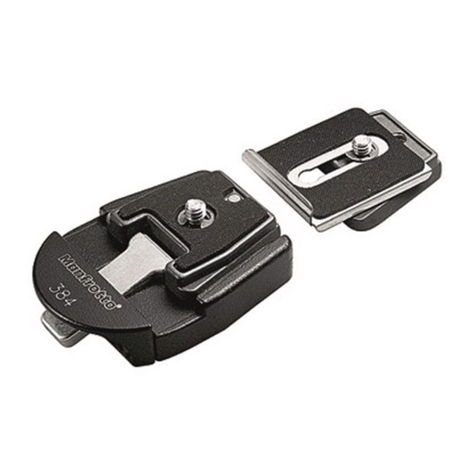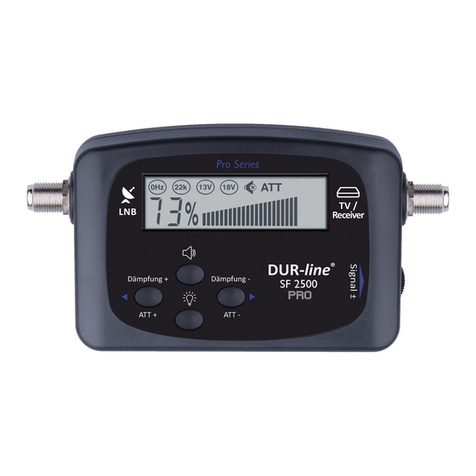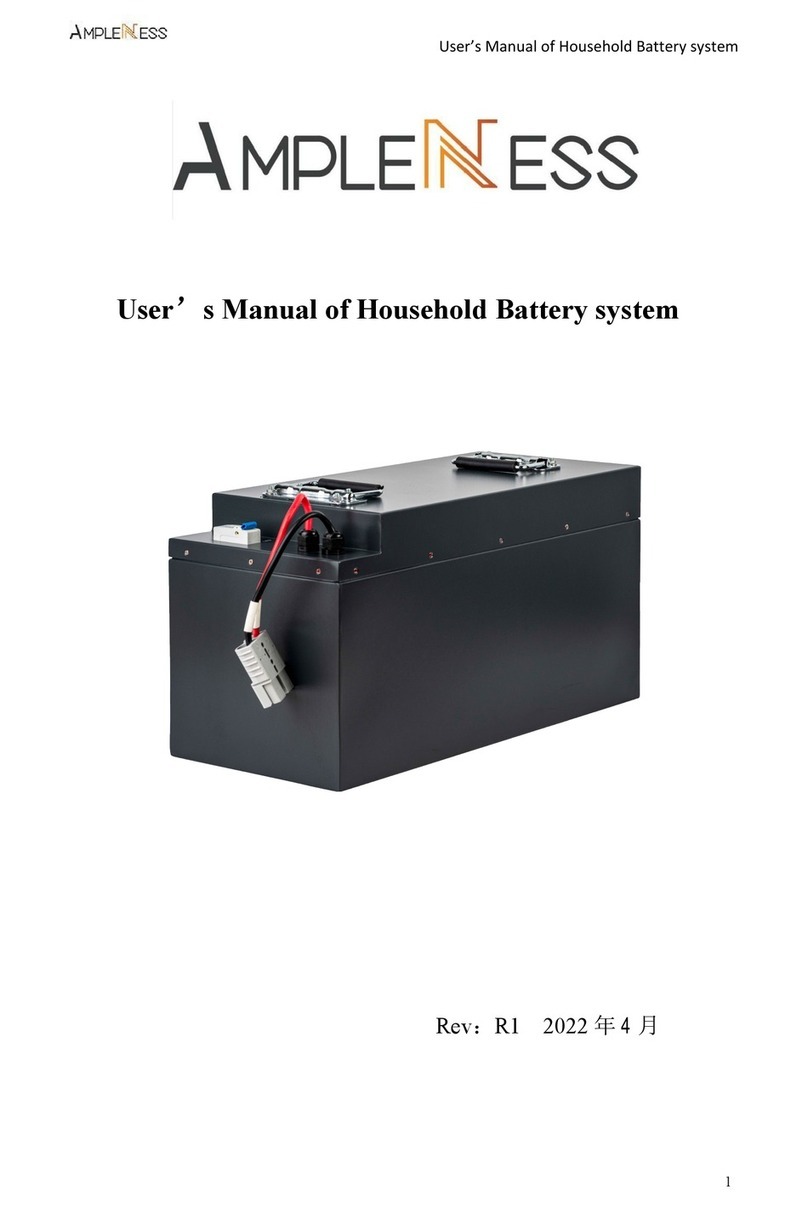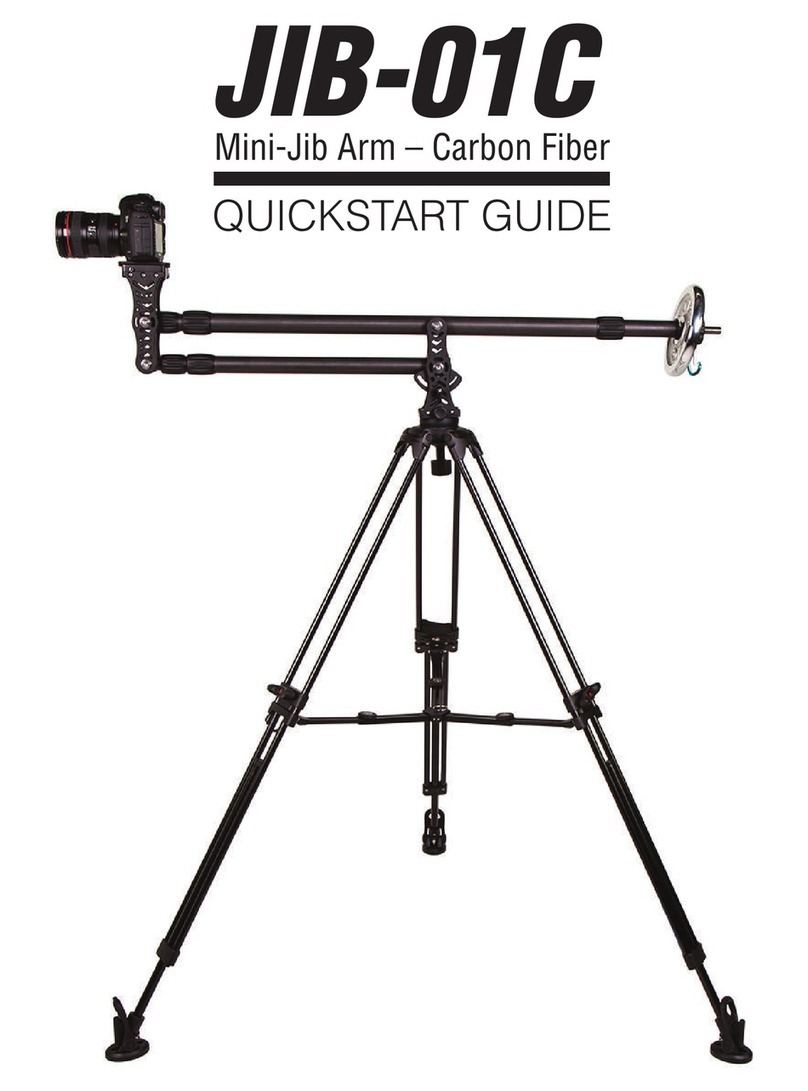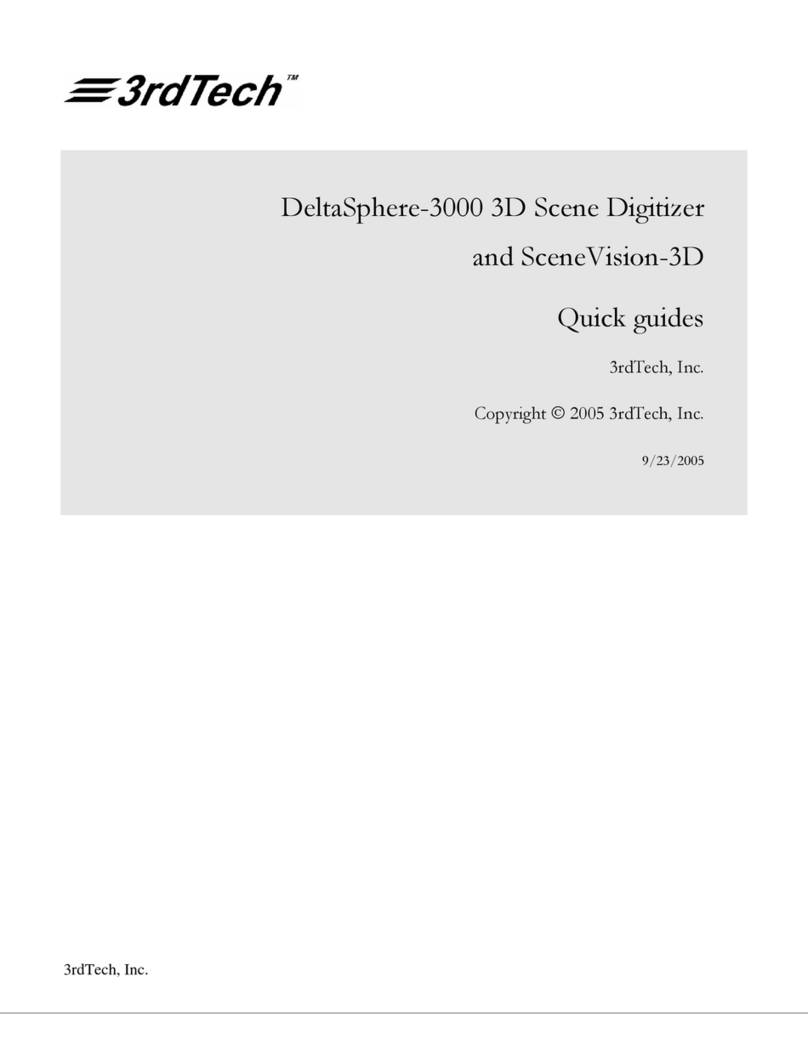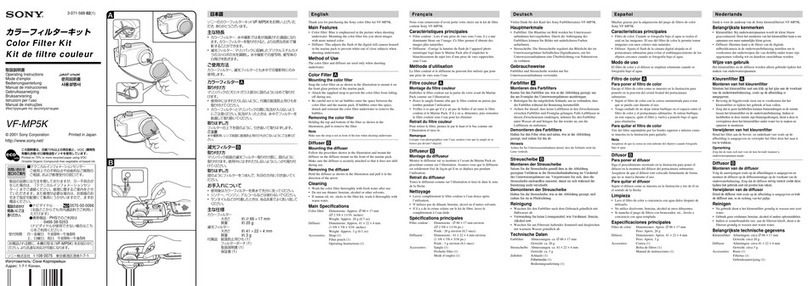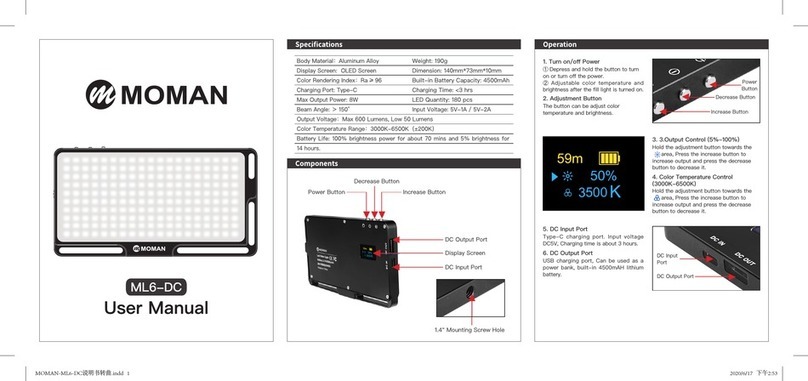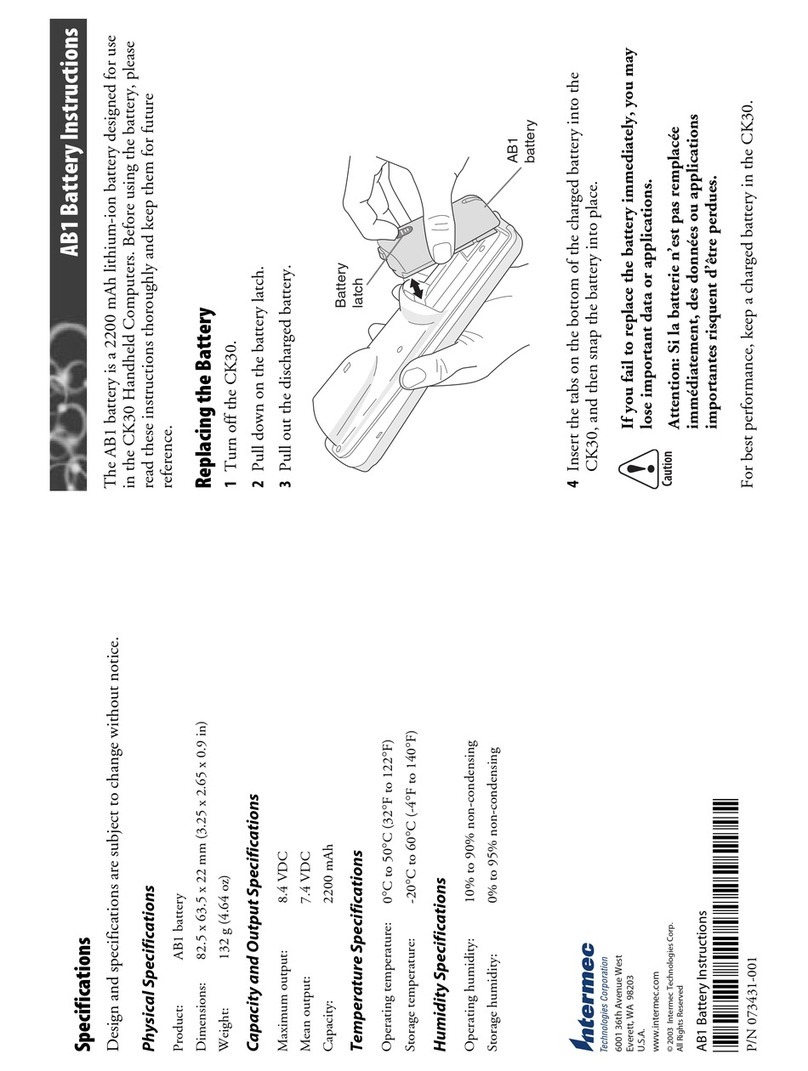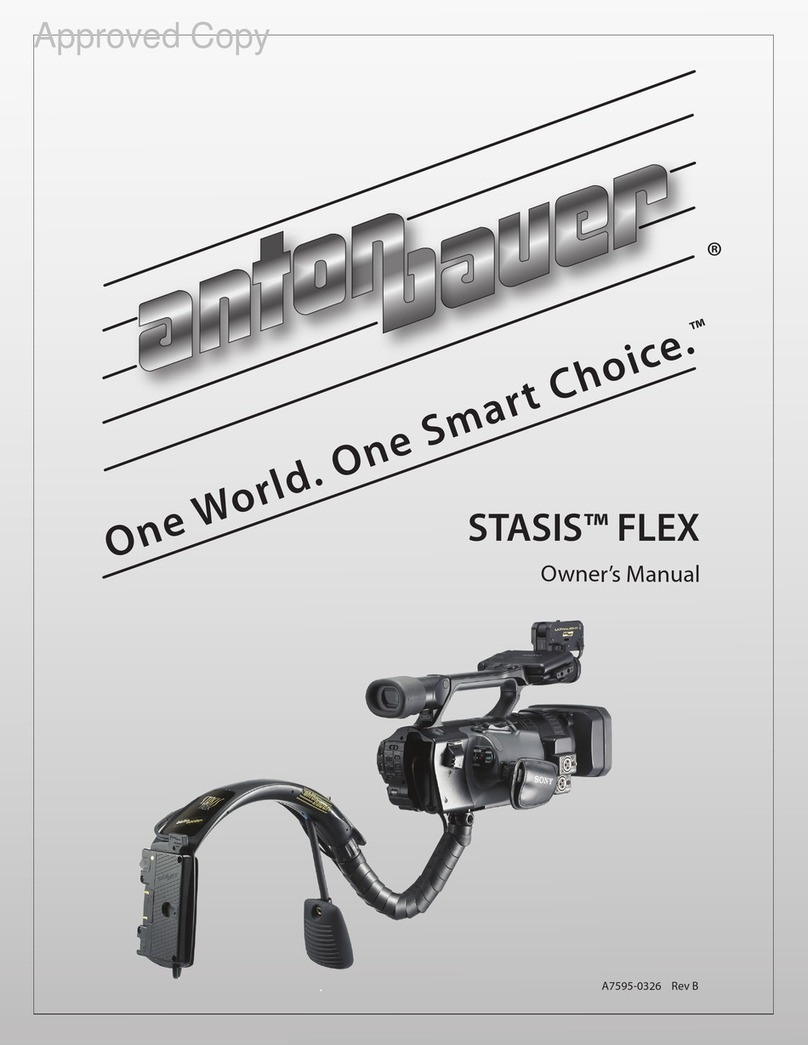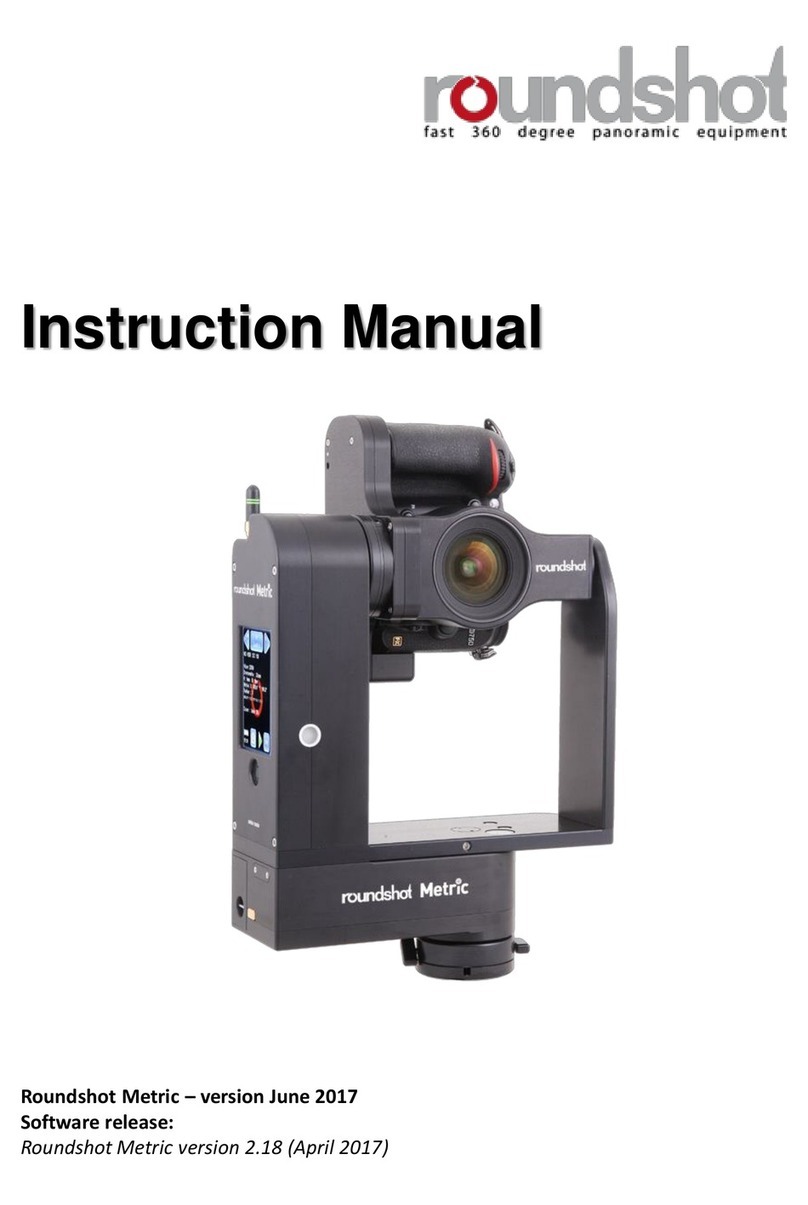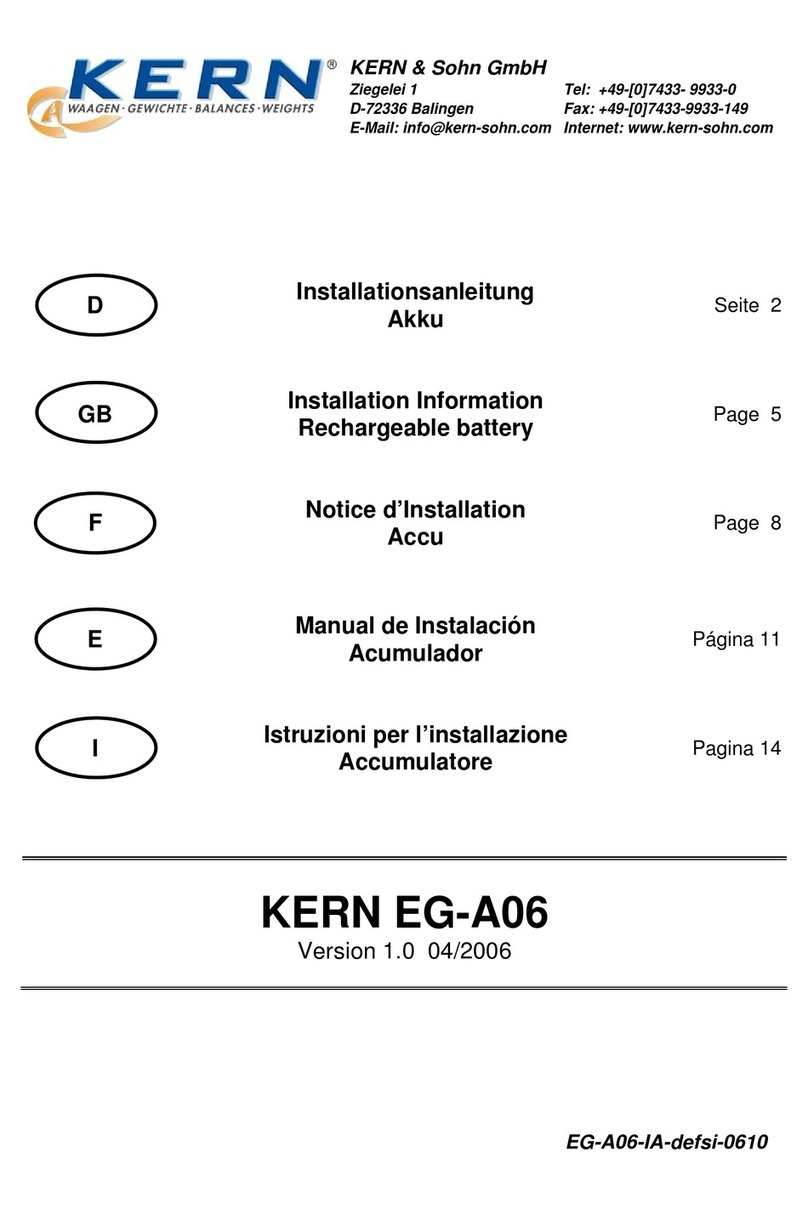INTRODUCCION
Rótula de 3 ejes, de grosor comprimido para cámara de gran formato.
CARACTERISTICAS
• Plato rápido con segundo pestillo de seguridad
• burbuja de nivel (para 2 niveles)
• mandos de diseño ergonómico.
La rótula 160 (3057 en USA) se suministra con dos mandos "A" y "B" sueltos.
Enroscar los mandos según fig. 1.
PREPARACCION
ACOPLANDO LA ROTULA AL TRIPODE
Acople la rótula al trípode utilizando la rosca "E" de 3/8" hembra.
Las plataformas superiores de los trípodes Manfrotto vienen con tres tornillos "F" que
presionan contra la base de la rótula para afianzar un bloqueo seguro.
QUITAR EL PLATO RAPIDO DE LA ROTULA
Para retirar el plato "G" es necesario girar la palanca de seguridad "I" totalmente en
dirección de la flecha junto con la palanca "H" hasta que el gancho "L" se abra y suelte el
plato. (Para accionar la palanca "H" del todo el segundo pestillo de seguridad "I" ha de ser
accionado al mismo tiempo como se indica).
CAMBIO DEL TORNILLO DE LA CAMARA
El Plato "G" se suministra con un tornillo "M" de 3/8".
Si su cámara es de rosca 1/4": Sustituya el tornillo "M" de 3/8" por el de 1/4" - "P"
ACOPLAR EL PLATO A LA CÁMARA
Fijar el plato "G" enroscando el tornillo "M" en la rosca en la base de la cámara SIN
EMPLEAR FUERZA (acuérdese de desenroscar primero por completo la arandela de
bloqueo "Q")
Antes de un bloqueo total alinee la óptica con las indicación “LENS” del plato "G".
Asegure la cámara por completo girando la arandela "Q" contra el plato "G"(por ej.
con un atornillador). El anillo de bloqueo “Q” está equipado con ranura “S” que facilita
apretarlo. Adicionalmente está provisto el plato de un juego de tres tornillos "X" que
se atornillan contra la base de la cámara para afianzar el bloqueo efectivo y seguro.
COLOCANDO LA CAMARA EN LA ROTULA Y
Respecto a la posición mostrada en fig. 4 inserte el plato "G" (fig. 4) enlas guias de
bisel "T" arriba en la rótula y luego presione el plato "G" hacia abajo hasta que la
palanca de bloqueo "H" encaje y cierre.
Cerciórese que el plato "G" (fig. 5) esté plenamente bloqueado empujando la palanca
"H" toda atras hacia la burbuja de nivel y compruebe que la cámara esté firmemente
cogida a la rótula.
RETIRAR LA CÁMARA DE LA RÓTULA
Siempre que la cámara ha de quitarse de la rótula, coja la cámara segura con una
mano mientras que maneje la palanca de bloqueo "H" y la de seguridad "I" con la
otra.
USO
Son tres mandos "A", "B" y "C" que controlan los movimientos de la rótula.
- El mando "A" controla el giro de 360° desenroscar el mando para desbloquearlo, girar
hasta la posición deseada
y volver a apretar hasta el bloqueo total.
- El mando "B" es responsable del movimiento de inclinación entre +90° y -20°; desenroscar
el mando, inclinar hasta la posición deseada y volver a apretar hasta su bloqueo total.
- El movimiento de inclinación entre +90° y -15° se consigue cogiendo la cámara con una
mano mientras que con la otra se bloquea/desbloquea manejando el mando "C" (fig. 7)
Las dos burbujas de nivel "J" (fig. 1) se utilizan para nivelar trípode y rótula.
INTRODUZIONE
Testa a 3 assi ad altezza contenuta ideata per fotocamere di grande formato
CARATTERISTICHE
• piastra ad attacco rapido con dispositivo secondario di sicurezza
• 2 livelle a bolla
• manopole di comando ergonomiche
La testa 160 (USA 3057) è fornita con le due manopole “A” e “B” (fig. 1) smontate.
Montare le manopole nelle rispettive posizioni come indicato in fig. 1.
PREPARAZIONE
MONTAGGIO DELLA TESTA SUL TREPPIEDE
Montare la testa sul treppiede utilizzando l’attacco femmina “E” da 3/8” (fig. 1).
I treppiedi Manfrotto sono dotati di tre grani “F” da avvitare contro la base della testa
per un bloccaggio efficace e sicuro.
SMONTAGGIO DELLA PIASTRA DALLA TESTA
Per rimuovere la piastra “G” (fig. 2) è necessario agire sulla leva di bloccaggio “H”.
La rotazione della leva “H” è impedita, contro sganci accidentali, dalla sicurezza “I”.
Per la rimozione della piastra “G” si deve quindi ruotare completamente la sicurezza “I” nel
senso della freccia assieme alla leva “H”, fino allo scatto del piolo “L”.
SOSTITUZIONE DELLA VITE D’ATTACCO DELLA PIASTRA
La piastra “G” (fig. 1) è fornita con la vite d’attacco “M” da 3/8”.
Se la vostra fotocamera è provvista d’attacco da 1/4”:
- Sostituire la vite “M” da 3/8” con la vite “P” da 1/4” (fig. 1).
MONTAGGIO DELLA FOTOCAMERA SULLA PIASTRA
Per fissare la fotocamera alla piastra “G” (fig. 3) avvitare, SENZA FORZARE, la vite
d’attacco “M” nel foro filettato della fotocamera fino a fondo del filetto (ricordasi prima di
svitare completamente la ghiera “Q”).
Prima del bloccaggio definitivo, allineare l’obiettivo della fotocamera con la scritta “LENS”
visibile sotto la piastra “G”.
Bloccare definitivamente la fotocamera avvitando la ghiera “Q” contro la piastra “G”.
La ghiera “Q” è provvista di sede “S” per facilitare (ad esempio con un cacciavite) il
serraggio più efficace. Inoltre, se ciò non bastasse, si possono avvitare i tre grani “X”
(fig. 3) contro il fondo della fotocamera.
MONTAGGIO DELLA FOTOCAMERA SULLA TESTA E
Rispettando l’orientamento della fotocamera visibile in fig. 4, infilare dall’alto la
piastra “G” sulla testa portandola in appoggio sui due lati inclinati “T” della sede
d’aggancio e quindi premere la piastra “G” verso il basso fino allo scatto della leva di
bloccaggio “H”.
Assicurarsi che il bloccaggio della piastra “G” (fig. 5) sia completo spingendo a
fondo la leva “H” e controllando che la fotocamera sia saldamente ancorata alla
testa.
SMONTAGGIO DELLA FOTOCAMERA DALLA TESTA
Ogni volta che è necessario togliere la fotocamera dalla testa tenere saldamente con
una mano la fotocamera e con l’altra agire sulle leve di bloccaggio “H” e sicurezza
“I” (fig. 6).
USO
I movimenti della testa sono controllati dalle tre manopole “A” “B” e “C” (fig. 1).
- La manopola “A” comanda il movimento panoramico a 360°: svitare la manopola per lo
sbloccaggio, raggiungere la posizione voluta e riavvitarla fino ad ottenere un bloccaggio
efficace.
- La manopola “B” comanda il movimento di inclinazione verticale tra +90° e -20°: svitare
la manopola per lo sbloccaggio, raggiungere la posizione voluta e riavvitarla fino ad
ottenere un bloccaggio efficace.
- Il movimento di inclinazione laterale tra +90° e -15° deve essere effettuato impugnando
direttamente la fotocamera con una mano, e agendo con l’altra mano sulla manopola di
blocco/sblocco “C” (fig. 7).
La testa è dotata di 2 livelle a bolla “J” (fig. 1) utili per il livellamento della testa e del
treppiede. Cod. 160,34 - 09/04 Copyright © 2004 Manfrotto Bassano Italy 13,5 cm 2 kg 10 kg
5 1/4” 4,4 lbs 22 lbs
INSTRUCTIONS
160 - USA 3057
1
1
1
3
4 5
6
2
1
1
1
3
4 5
6
2
1
1
2
1
3
4 5
1


